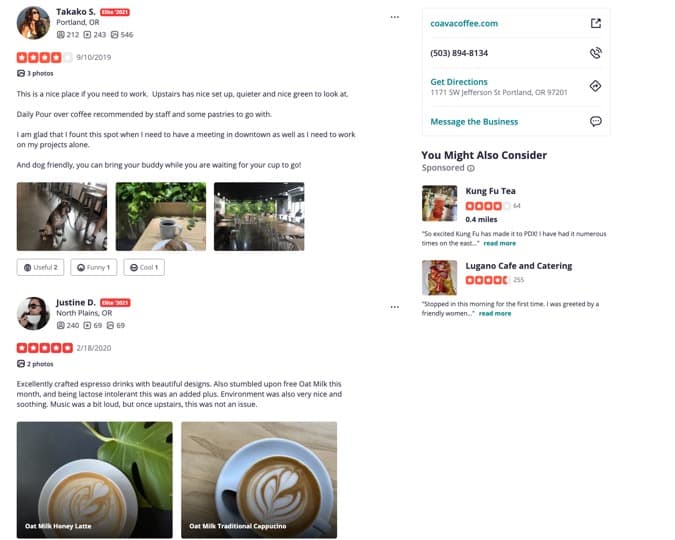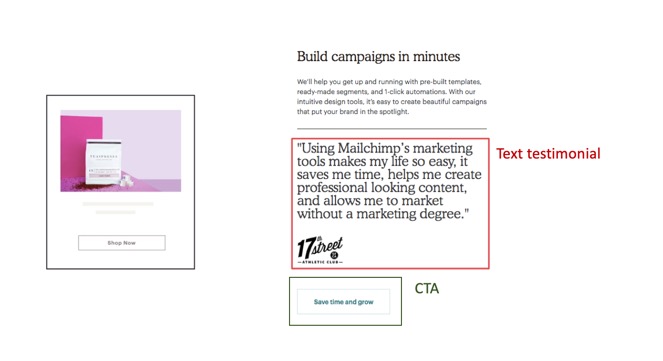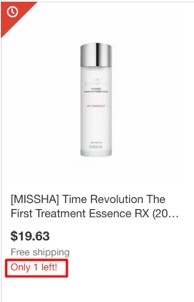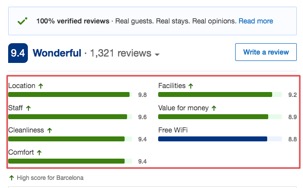Social Proof: How It Applies to Marketing
Nowadays, bringing new users to your website isn’t enough. If they leave before performing some desired action, your efforts are wasted. If your website isn’t converting visitors into customers, it’s not doing its job. One of the ways to increase trust and conversions is social proof.
Social proof is when people emulate the actions of others to help arrive at a decision. In other words, if other people believe or trust something, they can trust those decisions as correct. People tend to do what other people have already done.
Chances are you’ve already come across lots of conversion rate optimization “tips,” from “add scarcity to your copy” to “change a button color.” The truth is, these insignificant tweaks bring almost nothing.
The first path companies should follow to increase their conversion rate is to be trustworthy. In today’s overcrowded online world, your prospects need one thing: confidence. Confidence in your company’s reputation and confidence in the value you will deliver.
Your reputation plays a massive role in establishing trust online. People search for you on the web to learn about you, view your work, and much more.
Social proof is a powerful marketing strategy that lets you use your existing success to gain more conversions with no additional investment. How does it work? The answer is pretty simple: credibility leads to money. People who trust the information on a given website are more likely to become paying customers. Nobody buys from someone they don’t trust.
Unless you’re a well-recognized company like Amazon, work on injecting social proof as hard as possible. And by the way, the Amazon website is full of social proof elements.
In this article, we will dive deep into simple yet powerful tricks to build user trust and, as a result, gain more conversions with the help of social proof.
Sections
- What is social proof?
- Why is social proof so powerful?
- Website: Spice up your copy
- Testimonials: Give your customers a voice
- User activity: Generate some heat for prospects
- Star ratings: Make your web pages shine
- Social count: Join the vanity fair
- How to automate social proof implementation
- How to start using social proof techniques today
- Social proof FAQs
What is social proof?
Social proof is a phenomenon where people behave in a certain way based on the actions of others. This concept is commonly used as a persuasion technique, in which individuals try to emulate others to be viewed more positively.
Many online marketing campaigns rely on social proof to be successful. This includes online reputation management and local SEO. When people see positive reviews and testimonials on a local business website, it makes them feel like they can trust this company and are thus more likely to do business with them.
And, when people see positive reviews on a local business search listing that match competitors’ listings, it convinces them that they should use that company over the other businesses. In both cases, we see social proof’s impacts at work. The same concept can be applied to all areas of marketing.
Why is social proof so powerful?
People are looking for social proof on every website they visit. Why? When unsure what to do, we look around for guidance. In other words, social proof is an essential element of website content because it motivates website visitors to take action by saying that other people in the same situation have done so and gotten successful results.
Considering that, if nobody says your product is excellent, its quality is almost useless in terms of marketing. Alternatively, if your website features hundreds of testimonials and case studies, your product will seem more attractive to prospects.
Also, social proof is partly based on scarcity. Scarcity claims that the rarer the product, the more valuable it is. Nothing is more frustrating than missing out on an excellent opportunity. Think about what you want to do when you hear “Only two items left at this price!” for a Black Friday Sale. We know you want to buy the item. It’s okay to admit it.
Airbnb is notorious for doing this. They will let you know when a property is “usually booked” in order to create a scarcity mindset and close the sale.

Let’s move further and investigate what social proof techniques you can adopt to dramatically improve your conversion rate.
Website: Spice up your copy
Your website is the primary area of increasing the conversion rate with the help of social proof. In the following sections, we’ll examine specific types of social proof. But now, let’s investigate how a few words can build trust around your company and turn your website into a conversion machine.
First, show how many customers you have already successfully served. Here are a few ways to show appreciation for your customers while also building trust:
- Feature customer logos on your website
- List industry partners
- Feature press mentions
- List industry awards
Testimonials: People trust others
Nobody wants to be the very first person to buy a product. Alternatively, when people see existing and happy customers, they feel more confident about the purchase. The numbers claim that 70 percent of us trust recommendations, even from strangers. As a result, testimonials result in a higher conversion rate.
But resist the urge to use fake testimonials. This trick will be uncovered shortly; your prospects are clever enough to do that. Instead, keep testimonials featured on your website authentic and relevant. Also, always add a respondent’s full name, picture, and company name. You’ll want to mirror how big review sites like Yelp and TripAdvisor do it.

While text testimonials are fantastic, video ones are even more powerful: people are 64 percent more likely to buy after watching a video. Videos are easy-to-consume and enjoyable compared to text. Personal video testimonials are a perfect ice-breaker and create an emotional bond between your company and prospects.
For instance, you can put a short 30-second video testimonial right on the main landing page. Or you can consider spicing up your product pages with one-minute testimonials that describe your services or product features. In other words, place both video and text testimonials where they will affect your conversion rate:
- Next to a contact form
- Near a call-to-action button
- On an order form
- On a sales page, right after the benefits of your product/service
Here’s how Mailchimp does it:

User activity: Generate some heat for prospects
A single number can be worth a dozen words. Featuring user activity in real-time builds trust around your company and increases conversions by letting prospects know that others are surfing your website and buying. What types of user activity can you feature? Let’s discover!
First, consider displaying recent conversions like opt-ins or sales to increase your conversion rates. Next, you can display the number of real-time visitors on your website or specific web pages. This simple trick shows prospects how popular your products are.
You’ve probably seen this many times — small pop-ups in the lower left-hand corner of the screen. These widgets make you feel like everyone else is there except you. As a result, signing up or making a purchase becomes irresistible.


How does this type of social proof work? When a prospect lands on your website, social proof platforms identify them and display recent user activity or conversions to establish social proof and raise your conversion rates. That means you can set up these social proof notifications without coding, which will automatically pop up. You’re on your way to more conversions and closed deals with a few clicks.
Here’s one more tip: if a product is top-rated, let prospects know with phrases like “Only 2 left in stock.” When the stock is limited, don’t forget to indicate it clearly near your call-to-action “Order now” button. Also, show out-of-stock products to disclose high buyer interest.

Star ratings: Make your web pages shine
Another social proof tactic is the infamous star ratings. You’ve seen them everywhere. And there’s a reason: star ratings are the most easily recognizable expression of customer satisfaction.
We base so many life choices on star ratings that our trust in them has become second nature. You can find star ratings on all kinds of websites, from Yelp to TripAdvisor to Udemy (shown below).

You can showcase star ratings as:
- A small graphic element (like in the example above)
- A notification widget
- An on-page review badge.
You can also show an aggregated review score on your product pages or images, as large online retailers often do. This step will ensure that good reviews still influence users who don’t scroll to the bottom of the page.
Remember that your star ratings don’t need to be the highest. Five-star ratings don’t influence conversions directly. They only impact conversions when the content of the feedback contains valuable information. Considering that, add some details to your star ratings, explaining what these stars mean, like Booking.com does:

Remember that a perfect 5.0 rating looks suspicious. So the star rating on your website needs to be above average but not the highest. The ideal star rating is between 4.4 and 4.5.
And last but not least: use review schema markup to feature star ratings under your search engine results. This small yet powerful element will motivate prospects to click on your link instead of another one. Put it simply, review schema markup is just an additional few lines of code that make star ratings on your website more readable for Google.

Social count: Join the vanity fair
Social count widgets display the number of your followers on various social networks. This social proof widget is extremely useful because it allows website visitors to become your social media followers with a click.
Why is social count effective in terms of conversions? Prospects want to buy from companies with many social media followers because a higher number of fans promotes credibility.
The best part is that you can implement a social count widget on your website in the blink of an eye. All it takes is to copy-paste one line of code using a social media platform. Then, the platform automatically collects data from your social accounts and displays the number on the website page.
Also, you can use numerous free WordPress plugins to add a social count widget to your website. Both social proof platforms and WordPress plugins allow you to customize widget color, shape, animation style and add your company logo. But you can opt for the pre-defined templates and save time.
How to automate social proof implementation
Gathering testimonials, star ratings, etc., can be time-consuming. Luckily, there are lots of social proof tools available on the market that you can use to boost your website conversions without technical skills. The most comprehensive social proof platforms allow you to:
- Use existing videos from Facebook, YouTube, etc., as video testimonials
- E-sign a contract between you and your testimonial sender
- Change the look of the review to match your website or use one of the pre-defined templates
- And many more
How do they work? When customers convert, these tools automatically send them a link to leave a testimonial or star rating. When feedback is left, the social proof tool displays it on your website to get more conversions.
If you’re going to use video testimonials only, tools like Boast, Getbrabo, and HippoVideo will simplify the video testimonial collection process. They enable customers to record short videos quickly and easily using their smartphone or webcam.
How to start using social proof techniques today
If your prospects don’t trust you, they won’t become paying customers. Luckily, different social proof types like text and video testimonials, real-time user activity, star rating, and social count can boost website credibility and increase the number of conversions.
To experience a boost in revenue, follow the next simple guide:
- Choose one type of social proof to test out.
- Test every social proof technique to see how the elements affect your conversion rate.
- Conduct only one test at a time to see which social proof technique works best for your website.
- If chosen types of social proof don’t show desired results, don’t give up. Instead, try to optimize your A/B campaigns: choose other targeting rules or website pages, change the placement, add another CTA, feature other testimonials, etc.
- Don’t stop gathering testimonials and star ratings. For instance, make sure you’ve gathered testimonials that address prospects’ objections, testimonials that show the benefits of your product, etc.
- To automate the process and save your time, test out social proof platforms to get the most out of social proof.
- Don’t forget that social proof is only a part of your overall conversion rate optimization strategy.
- And last but not least: follow through on your promises. Be exact in your claims, and don’t provide misleading information.
Good luck on your road to higher conversion rates!
Social proof FAQs
What is social proof?
Social proof is a phenomenon where people behave in a certain way based on the actions of others. This concept is commonly used as a persuasion technique, in which individuals try to emulate others in the hope of being viewed more positively.
What are the different types of social proof elements?
Different social proof elements like text and video testimonials, real-time user activity, star rating, and social count can boost website credibility and increase the number of conversions.
How can you showcase star ratings on a website?
You can showcase star ratings as a small graphic element, a notification widget, or an on-page review badge. You can also show an aggregated review score on your product pages or images, as large online retailers often do. You can also consider adding some details to your star ratings to explain what the stars mean.
Tags: Reputation Marketing.
